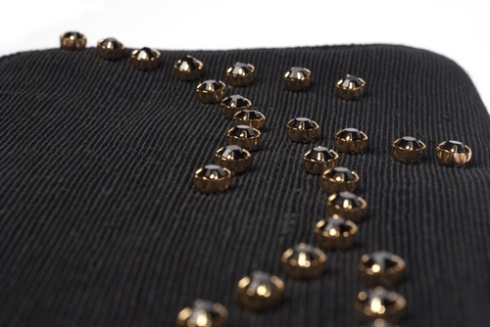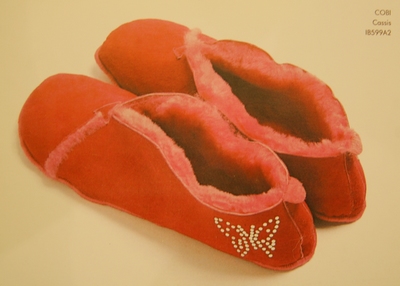Interview with Marion Ayonote – Accessories Designer and Creative Director of Marion Ayonote (UK) Limited
Marion Ayonote:
2002 – received special recognition award from Ovation Magazine as Africa’s top shoe designer
2002 – listed as one of the top 50 most influential female designers in the UK by the Design Association
2005 – awarded membership to the Chartered Society of Designers
2009 – won a special recognition award from BFIIN British female inventors and innovator’s network
2009 – engaged in design projects such as Knowledge Connect which was part funded by the L.D.A (London development Agency) and the ERDF (European Union Regional Development Fund), in collaboration with Prescott & Mackay
—————————————————————————————
When did you start to design shoes and bags and when did you set up your brand?
I began experimenting with developing my label since 1998, however I set up the Marion Ayonote label in 2000.

Velukid peep toe pumps with lem gold bubbles on heel and upper. Marion Ayonote A/W 2006
How did you find factories to produce your design?
I relied on the commercial department of the Embassy (In this case Italy) and was sent a list of manufacturers and contact details. so I sent letters by fax as most contacts on the list spoke Italian and emails were not as popular.

2 part high heel shoe, velukid upper + vintage feathers. Marion Ayonote A/W2006
Could you please tell us the story about the Icon Bag Series and your collaboration with Prescott & Mackay?
I had designed the concept for a specific occasion and had been to a few factories to try to develop initial prototypes but they found the collection a bit overwhelming so the timing with Knowledge connect and Prescott & Mackay couldn’t have been much sooner.
The Icon Bag Series Project
“The Icon capsule collection was developed for the 50th independence anniversary of the federal republic of Nigeria. I had designed a capsule collection of handbags drawing inspiration from the map of Nigeria, its borders and the river outline. The ridged edges made the Icon bag difficult to develop but thankfully, Prescott & Mackay developed the prototypes and the final samples. ”
“We also used the aso-oke fabric (hand woven silk threads) as the main material and lined the bags with suede in contrasting pastel and bold colours. The components include Swarovski crystals, horn handles, trimmings, ribbons and beads, zip holders and tassels. I am still receiving enquiries and orders for the IA & Heritage bags. We are currently developing the wallets from the Icon range in Italy. ”
Have your got any positive feedbacks/awards from this project and how did the project influence you?
The project was a success, I received a special recognition award from BFIIN( British female innovators & inventors network) in 2009. Also, positive feedback and new market opportunities for the range.
Please give some advices to people who are interested in shoes and bag design, particularly those who want to start up their businesses.
I would suggest they have a realistic business plan and sales strategy. Research their chosen market before embarking on a label launch. Use all available support. Work hard!
————————————————————————————–
Marion’s website: www.ayonote.com
If you are an independent designer and seeking a mentor or consultancy services from industry experts, please contact Prescott & Mackay via info@prescottandmackay.com, or call +44 (0)207 388 4547.











































Recent Comments